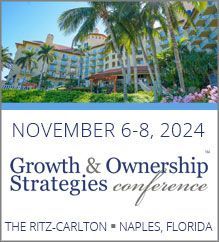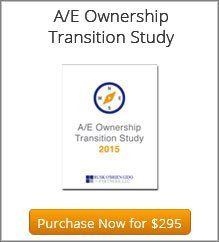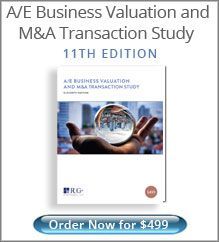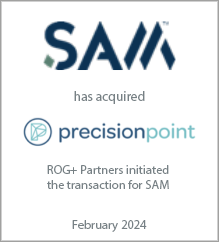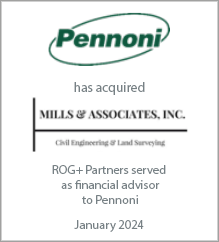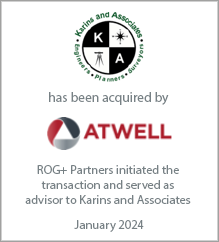Steve Gido specializes in corporate financial advisory services with a focus on mergers and acquisitions. Steve has assisted architecture, engineering, environmental consulting and construction firms of all sizes across North America achieve their growth or liquidity goals through successful mergers & acquisitions. Steve has over 15 years of investment banking experience and holds the chartered financial analyst (CFA) designation from the CFA Institute.
Perfecting the A/E Exit Strategy – Five Key Factors
March 20, 2024
An enormous A/E generation that kicked off their careers in the 1980s and subsequently started firms or became owners in the 1990s and 2000s is plotting their final act. Baby Boomer A/E owners across every discipline are contemplating how to transition their firms for sustainability and survivability. And while some are ready to relinquish and others wish to hold on a few more years, the need to assess exit strategy options has never been more urgent.
According to a recent CBS News article, "Approximately 4.1 million Americans are poised to turn 65 this year and every year through 2027, according to a report from the Alliance for Lifetime Income. Dubbed by experts as "peak 65" or the "silver tsunami," the figure represents the largest surge of retirement-age Americans in history."
And let's face it - many "peak Boomers" have had a great run the last 15 years. Emerging from the depths of the Great Recession, owners have benefitted from favorable economic conditions, industry tailwinds, and abundant project demands, all of which have allowed them to grow and thrive. And while every firm's culture and characteristics are unique, both the mindset and decisions required to navigate a successful transition are the same.
In our experience working with A/E leaders on a wide range of exit strategies, here are five quintessential and interrelated aspects to consider:
- Define your professional and personal goals
– At any stage, the key for an A/E owner is to take stock of what's important in their life and career. Do you still love what you do, or has the job taken its toll? How much longer would you like to work or need to work? Is your role critical to the day-to-day success of the firm? Are there family, financial, or health issues that impact your goals? What are the legacies you want to leave as you near retirement? Who will replace you?
Now, when a firm has multiple shareholders of various ages and motivations, some of these goals may be compatible and others may conflict. Owners need to be transparent with one another about their goals to ensure adequate company planning and continuity. - Desire to keep the company independent or not
– Some A/E owners create a company or take over as a new generation with the intentional goal of keeping it a standalone firm. Other entrepreneurs start a business, grow it, and then purposely sell it to another organization. Whatever your intentions, the "sell down" or "sell out" choice is something an ownership group ultimately needs to decide. However, as we've seen, it also doesn't necessarily have to be mutually exclusive.
If the company wishes to remain independent, what, if anything, needs to change? Can it handle retirements from a talent and succession perspective? Do internal buybacks cause a redemption liability dilemma, or has that been modeled out? On the other hand, if the owners wish to sell the company, is it "sale ready," or are there financial, operational, or personnel areas that first need to be addressed? After years of calling the shots, can you see yourself working for others? Is everyone on the same page in terms of a desired buyer profile and culture? - The firm's marketability (internal or external)
– For A/E sellers planning to establish (or continue) an internal transition, you need to cultivate and develop younger professionals over time in preparation for ownership. In some cases, design firms have individuals eager for ownership potential as they are cognizant of the investment and future returns. But others simply don't have that next generation of interested buyers, or perhaps not enough of them to afford and absorb a sizable block of shares. For those who wish to remain independent and are at the right size, some organizations will pursue an ESOP (Employee Stock Ownership Plan), which "checks their boxes" of control, liquidity, engagement/culture, and tax benefits.
Despite a frenetic M&A environment, not all A/E firms are equally marketable. Depending on a company's size, location, disciplines, client mix, and financial performance, there may be a wide range of viable suitors or limited possibilities. In addition, if sellers are either more or less discriminating in their buyer "wish list" and characteristics, that can impact the overall pool and sale process. - What's the company worth
– For most owners, their stake constitutes a sizable portion of their overall financial portfolio, estate plan, and retirement proceeds. For those who wish to sell internally, valuations are lower given marketability and minority interest discounts, as well as the need for harmonious and practical affordability between seller and buyer groups.
Sellers pursuing the M&A route should start with a reasonable sense of the multiples and metrics that drive industry valuations. External valuations are typically higher than internal sales due to the implicit control premium that buyers must offer to sellers. Of course, price is just one of several complex variables in selling a business where forms of consideration, liquidity, taxes, indemnity obligations, business and cultural integration, and new employment roles and agreements are all part of the final deal. - The timing element
– Whichever path you decide to take, these transactions don't happen overnight and involve a good amount of planning and timing, as well as consulting with experienced advisors. Internal sale efforts involve years of preparatory activities to get young professionals to a Principal level of both technical and business development capabilities. Financing often involves the firm itself serving as a conduit. Installment notes or deferred compensation programs can range from 5 to 10 years. ESOPs also involve an extensive runway period, including valuation, feasibility assessments and scenarios, plus enacting a new communication, reporting, and governance structure.
If you decide to engage in an unsolicited buyer inquiry or formally put the company out to market through an external sale, it can usually take 8 to 12 months from courtship to closure. Of course, key owners may have to stay another 1 to 5 years in an employment agreement with customary non-compete and solicitation provisions. Sellers may decide it's worth testing the waters if they are coming off several years of elevated performance and a healthy outlook. Otherwise, they may wait until business or industry conditions improve.
* * *
We are all familiar with the adage, "Start with the end in mind," which is meant to help guide our values and goals into specific action plans. So, to those owners who have already devised and implemented a successful exit, we offer our cheerful congratulations. To those who need to start formulating a roadmap, there is no better time than the present!
Latest Perspective
Perfecting the A/E Exit Strategy – Five Key Factors
An enormous A/E generation that kicked off their careers in the 1980s and subsequently started firms or became owners in the 1990s ...
Rusk O'Brien Gido + Partners, LLC


